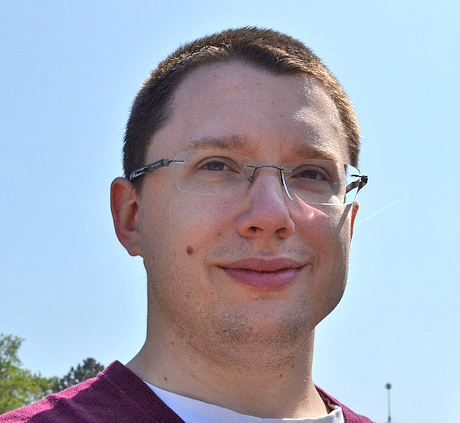A week of firsts
7 April 2015 | By

The annual conference, Moriond, is in its 50th edition this year, and I’ve had the pleasure of coming down to Aosta in Italy to participate in the QCD session for the first time. It’s actually a week of firsts for me. The conference organizers described it as being in a kind of “QCD confinement”: whereas most conferences are in big cities, where it’s easy to disappear into a museum or restaurant, stay in a hotel far from the conference, see friends, and so on, Moriond attempts to stay remote enough that the attendees are “forced” to discuss physics with each other for the week (it doesn’t take much encouragement, to be honest). Moriond has a funny schedule: talks from 8:30 to 12 in the morning, and from 5 to 7:30 in the evening, to leave a few hours in the middle of the day for skiing. Having never skied before, that’s been the most frightening first, but I am proud to say that I did manage to ski a couple of times while here, and I avoided breaking a leg this time. I even successfully got on and off a chairlift!
This was also the first time I’ve gotten to present the results of a physics analysis that I worked directly on at an international physics conference. And what a chance! That sounds a little funny, of course. ATLAS, like the other experiments, has to find a balance between getting the best, most knowledgeable speakers at each conference and ensuring that young students, people looking for jobs, and people who have been doing critical work for the experiment that isn’t a physics analysis (work we call “service work”, generally) get to go to conferences. That does sometimes mean people are asked to give talks on subjects that they’re familiar with, but the results that are ready to be presented may not be ones that they were deeply involved in producing. And that’s been the case for me – I’ve been to a couple of conferences, but up to this point it’s just not quite been at the right time or with the right topic to show something that I was working on.
Whereas most conferences are in big cities, where it’s easy to disappear into a museum or restaurant, stay in a hotel far from the conference, see friends, and so on, Moriond attempts to stay remote enough that the attendees are “forced” to discuss physics with each other for the week (it doesn’t take much encouragement, to be honest)

So what about those results? Well, one of the papers I worked on was submitted back in January, and while it was a great search covering lots of different possible signals, we didn’t really see anything. But some of you might have seen that CMS recently submitted a SUSY search that had a ~2.5 sigma excess, which caused a lot of stir. The week after, ATLAS submitted our version of the same search, which I also had the pleasure of helping out with, showing that with a signal region designed to be as close as possible to the CMS search region, we do not see a similar excess. But in the same paper, we pointed to another area with an apparent 3.0 sigma excess! There has been some discussion, both in the form of papers submitted by theorists and in the form of physics blogs.
It’s a fun possibility for the world to think about: have we seen the first hint of something really exciting, or have we just seen a rare fluctuation, expected because of the enormous number of searches we’ve performed? One wonderful talk given during the week was all about the “Fifth Force”, an interesting and extended saga of scientists trying to understand whether the data they had collected was the sign of something absolutely critical to understanding the universe, or just an unexpected manifestation of a well-known phenomenon. One of my favorites from that talk: in order to measure very small deviations in gravity, they needed to survey a large area around the (outdoors) experiment. The researchers failed at one point to account for the fact that graduate students carrying a $50,000 piece of equipment would not want to take it near a river or up a steep hill, and that led to a bias in their results.
We’ll have to wait for the next run to find out whether the small excess persists – but we should know soon! We got the good news that beam is expected back in the machine in a few days. Run 2 is not far off!




